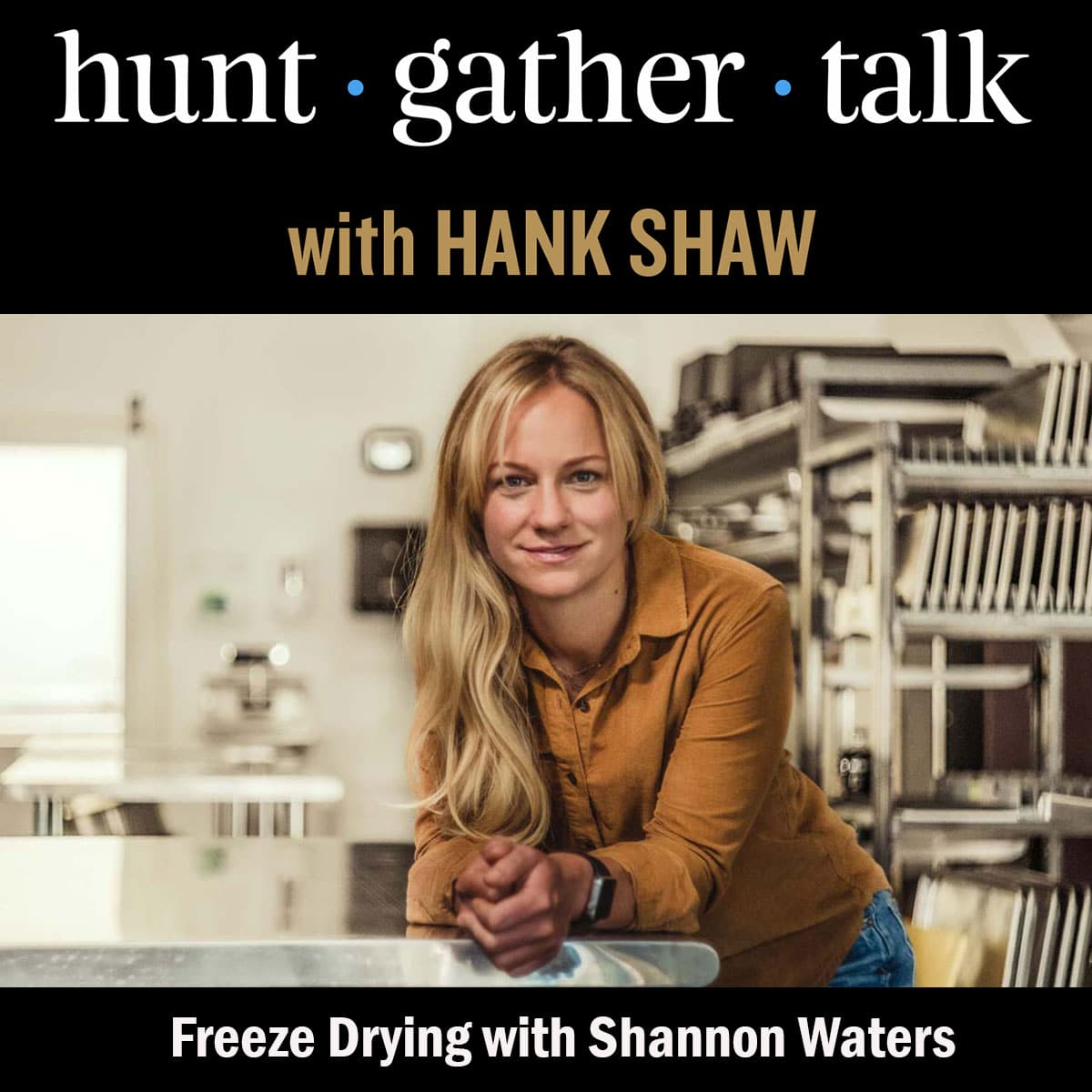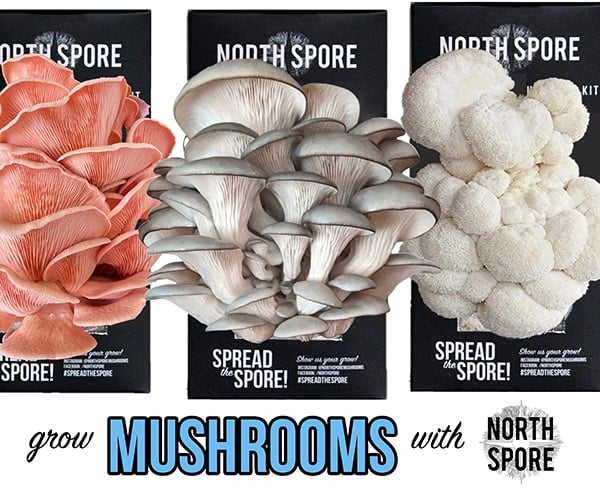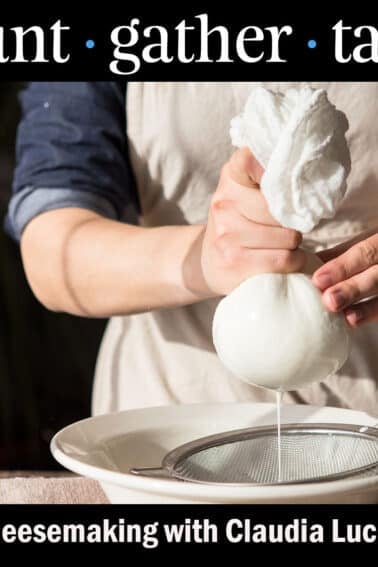As an Amazon Associate I earn from qualifying purchases.
Podcast: Play in new window | Download
If you’ve ever wondered about freeze drying, this episode’s for you. Spoiler alert: Freeze drying is more than just astronaut ice cream.

In this episode, I talk with Shannon Waters, a former chef and restaurant consultant who is making waves with Third Wave freeze-dried meals through her company Gastro Gnome Meals.
Shannon and I talk about freeze drying at home: When it makes sense, when it doesn’t, what foods work well with freeze drying, as well as some memorable failures…
Hunt Gather Talk is sponsored by Filson, E-Fish and Foraged Market; their generosity makes this podcast happen.
KEY LINKS
- Gastro Gnome’s website, where you can get all sorts of super premium freeze dried meals.
- This is the website for the Harvest Right freeze dryer, which is the only game in town where it comes to home freeze dryers.
- A good article evaluating whether the expense of a home freeze dryer is worth it for your situation.
- Some hacks if you want to play around with freeze drying without the expense.
If you have a suggestion for a podcast topic, drop me a line at hank@huntgathercook.com.
Click Here to Subscribe via Spotify, Apple Podcasts, Google Podcasts, iTunes, Podbean, or Stitcher
Click Here to Subscribe via RSS (non-iTunes feed)
MORE PODCAST INFO
You can find archives of this season and the three previous seasons on my podcast page.





I hope people give Shannon’s freeze dried food a try. But there is a bunch of different freeze dried foods already sold at standard supermarkets. What stuff? Many different freeze dried mushrooms like porcini, shitake, morels and others are sold after freeze drying. Mushrooms are fat free and very high moisture so they freeze dry wonderfully. How to know if the dried mushrooms in your hand are freeze dried? They have held their shape and haven’t collapsed like a dehydrated vegetable. But they will be expensive. Same for various freeze dried berries. Strawberries and blueberries and raspberries are also sold freeze dried and not just dried. But for freeze dried meats, I think it is still something sold by specialist suppliers. Mostly because of the need to vacuum foil barrier package the final product as meats will go rancid and oxidize if not protected with those expensive multilaminate foil barriers. So a meal ready to eat can be much more expensive than the ingredients due to the expensive processing and packaging needed to make it shelf stable.
The reason why freeze dried food is so quick to re-hydrate is that the food’s cellular structure is largely intact after freeze drying. So foods with an instantly recognized natural texture is the best candidate for being worth the freeze dried premium cost. And the freeze dried food must be vacuum packed in expensive multi laminated foil packaging. So I recommend a hybrid approach and go with a mix of some freeze dried items mixed with a bunch of precooked dried and dehydrated. The first step in a successful freeze dry run is the freezing. Just like Charles Birdseye discovered, flash freezing super rapidly to well below the glass transition temperature of all the liquids is important and that includes liquid fats like vegetable oils and fish oils. Those oils freeze solid well below the freezing point of water but will never sublimate or evaporate so they will remain behind in the final freeze dried product. And must be protected from exposure to oxygen. And if emulsified before freeze drying, that emulsion will not survive freeze drying intact, so creaminess must be created using modified food starches and not a classic oil in water emulsion like mayo when making freeze dried food.
And another big take home message is how different the disciplines of restaurant cooking vs. real deal food science processing are. Preservation of food is not something that resto cooks have any clue about nor do they have any idea of why various foods are processed the way they are before being sold. The whole farm to table minimal processing is a standard resto philosophy and it is not shared by food scientists. Food scientists are concerned with processing costs, food lifetime stability and packaging and distribution costs. And Shannon and others interested in this area of highly technical food processing need to seriously look into the subject of glass transition temperature. It applies to proteins, peptides and food in general. It will help anyone processing food in a lyophilizer understand why somethings work well and others fail. It is also a very important part of the manufacturing of modern monoclonals antibodies and various protein therapeutics worth billions every single year.
Back to Shannon’s statement about freeze drier service: The damn things break constantly and unless you can deal with broken vacuum pumps, loss of refrigerant and recharging compressors and leak checking your vacuum chamber, investing in this tech is likely to be super expensive and or frustrating. Get a quote for a yearly service contract BEFORE you pull the trigger on buying a new unit. And if you decide to compete with Shannon on freeze drying your own line of foods for sale, your first employee should be a super competent HVAC repair tech.
The freeze dry hacks listed on “The Manual” web site are pure misinformation. The author has clearly never done the home freeze drying he listed. The dry ice “hack” is B.S. cause it will not work and any hunter knows you may freezer burn the outside of your kill a little bit if you pack it in dry ice but it will not be magically freeze dried after 24 hours in your cooler when you get home after a hunt. And the statement that you need to pre-freeze your food to -40 to -50 is garbage. Only a compound compressor freezer (two separate compressors inline) can hit those temps and while those freezers are sold for storing sashimi grade fish, you flat out can’t afford to buy one or keep it running. Dry ice will be so cold that there will be ZERO sublimation of your frozen water at -80C or -110F if you try the dry ice hack listed at “The Manual”. Frozen food will get much colder than you froze it at, sitting inside a vacuum chamber undergoing sublimation so the tray style lyophilizer include heated drying trays and if your model doesn’t offer this feature, skip it. You can use dry ice to cryopump your vacuum chamber at those temps and supercharge your freeze dryer although liquid nitrogen is even better. Sublimation rate is proportional to the difference in temperature between your hot side and cold side chamber temperatures. There are naked refrigeration coils exposed to the vacuum chamber to collect the sublimed ice inside the chamber and using dry ice or liquid nitrogen allows even faster sublimation due to much lower moisture vapor pressure compared to any standard refrigeration coil temperature (think around -25 C). You must actually heat your frozen food to keep the lyo process running at top speed and the final temps can be above ambient as the process finishes due to molecularly absorbed water in your foods. That is why high sugar foods are so hard to freeze dry. Don’t even think of freeze drying your own ice cream as that requires the most expensive equipment and the patience of job and also special ice cream thickeners and recipes. Otherwise your ice cream will be a flat puck of inedible hard gum that can’t be chewed or swallowed. I speak from experience.
More disinfo on the Utah State lyo site. Vacuum pump oil must absolutely be FOOD GRADE and not some industrial grade for semiconductor processing for making food. Vacuum pump oil can easily back stream into your lyo chamber and so it must be edible food grade oil and making it food grade and vac quality is expensive. And that stuff is like 200 bucks per gallon not 20 bucks per gallon. You can’t find low grade motor oil at Walmart for 20 bucks per gallon and vacuum pump oil is super refined or fully synthetic and must be changed out frequently if it gets contaminated with water. And no you can’t filter it through coffee filters to restore its performance. And you will die of food poisoning if you try to freeze dry food inside your freezer as the center will remain water logged and get moldy and it will stink of all the other foods inside your freezer if you do that. C’mon do you wrap your food in various plastic and butcher paper to protect it from freezer burn and food smells or leave it unwrapped on the shelf to get contaminated? And grease and fat in meats is a problem unless you have a real deal commercial grade freeze dry setup as grease and fat will STOP the lyo process in its tracks. Oil and fats do not permit water vapor from subliming. So lean meats and fish are great candidates for freeze drying just like for jerky, while fatty meats and fish will likely go rancid and taste terrible due to smearing and oxidation.
And that one commercial supposedly affordable lyo company Harvest Right states they sell dry oil free vacuum pumps but these beasts cost many thousand of dollars new and require very expensive maintenance and service tech experience. Dry pumps are way outside most HVAC repair techs comfort level. I mean you can drop 50K or even more on a single dry pump from Edwards or Leybold or Balzers. And those are roughing pumps used to back up even more expensive turbopumps. This equipment is used in the superconducting supercollider and Google and IBM cryocoolers for quantum supercomputers.
Unless you work in HVAC repair and have the tools and experience to troubleshoot and repair fridges, freezers and know your way around vacuum pumps and all that tech, I would definitely skip rolling your own freeze dryer. And I say that having built and operated at least 30 of them over the years. I built and maintained many small bench sized and some much larger and room filling lyophilizers of various degrees of performance. One thing they all have in common is they pump out a lot of noise, heat and vibration due to the continuously running vacuum pumps and refrigeration compressors. Watch out for th electrical bills as they are huge per pound if freeze dried food. And I had the big advantage of working inside very deep pockets biotech companies where the costs of the equipment while eye melting was no big deal compared to all the other costs associated with making and preserving super expensive proteins, peptides and nucleic acids, all final finished with freeze drying. When the batch of potential drugs inside the freeze dryer is measured in millions of dollars, the 50K cost of the machine is no big deal. I have also built and maintained all sorts of homebrew freeze drying equipment and let’s just say that maintaining and repairing vacuum pumps, gauges and deep freeze equipment compressors is not really fun unless you have a very different idea of fun than most people. And let’s not forget that all this stuff requires a solid background in vacuum leak detection and troubleshooting as a tiny leak will make the whole system worthless.
If I didn’t scare you away yet, you can actually build a pretty large almost commercial grade freeze dryer for under a grand if you know how to shop around eBay and other auction sites for used vacuum pumps and refrigeration compressors. But buying used gear online is often a way to get burned by buying stuff that doesn’t have repair and service parts available and may also need expensive maintenance to get it back in operation. Remember this equipment will only break down when it is running a large batch of your most prized game meat. Seriously, what’s wrong with carne seca or carne mechada, it doesn’t need to be frozen inside a machine to taste great and have an interesting texture.
Buying a new commercial grade lyophilized is a way around this issue but remember it is only new once and after you use it, will require the experience and trade skills of an HVAC repair tech to keep running in top condition.
Thanks for breaking it down and bringing it home.
So timely, I was just looking into freeze drying to add to my vast canning, dehydrating, hunting, and fishing life style. I hate relying so much on the traditional freezer. Worry Power outages or freezer death is a worry. All that food and mostly meat gone-what a disaster. Love your books and podcast. Again, they are so timely, in-depth, and useful.